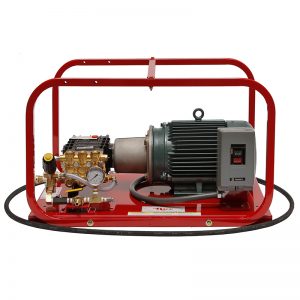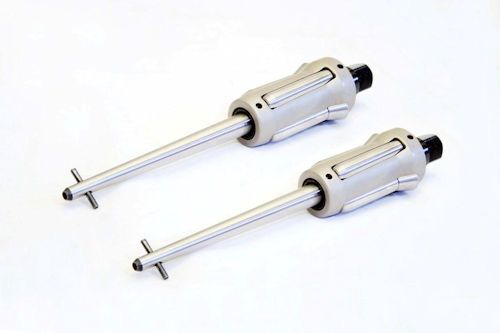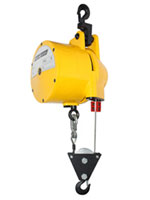Pipe Beveling with the FM-4000
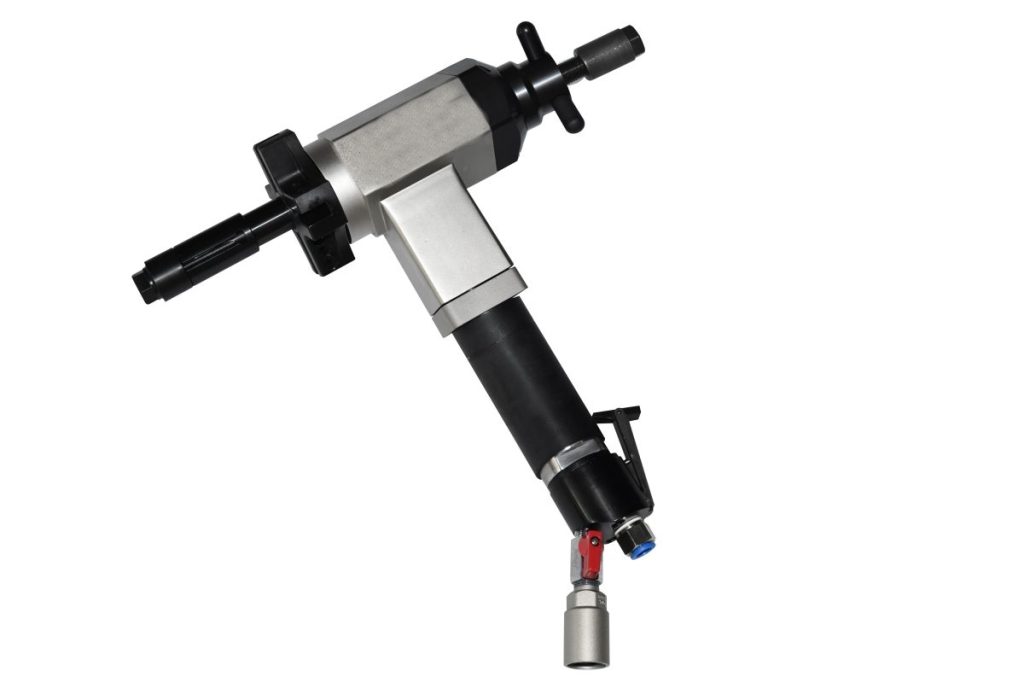
FM-4000 Pipe Beveling Machine - Pneumatic or Electric
The FM-4000 pipe beveler is a portable and robust machine designed for use on boiler tubes. Its lightweight construction and user-friendly handling make it highly practical. Its modular and ergonomic design, coupled with its high torque capability, makes it well-suited for demanding work conditions.
Pipe-Beveler-FM4000
| Drive | Pneumatic | Electric |
|---|---|---|
| Locking Range | 23-104mm (1″-4″) | 23-104mm (1″-4″) |
| Idle Speed | 70 RPM | 70 RPM |
| Torque | 140 Nm (103 ft/lbs | 143 Nm (105.47 ft/lbs) |
| Feed Stroke | 40mm = 1.9/16″ | 40mm = 1.9/16″ |
| Pneumatic Power | 1.33 Hp | – |
| Air Consumption | 55-66 cfm. | – |
| Air Pressure | 6 BAR 90 psi | – |
| Electric Power | – | 1000 Watts |
| Voltage | – | 110/220 Volts |
| Net Weight | 9.0 kg | 10 kg |
Basics of Pipe Beveling
A Step-by-Step Guide
Pipe beveling is an essential process in preparing pipes for welding or joining, ensuring a clean, precise angle at the pipe’s edge. Using a pipe beveling machine simplifies this task, offering efficiency and consistency. Below is a comprehensive guide to beveling pipe with this specialized tool.
Step 1: Understand the Pipe Beveling Machine
A pipe beveling machine is designed to create an angled edge or bevel on the end of a pipe. These machines vary in type, including portable, stationary, manual, and automatic models. Familiarize yourself with the machine’s features, controls, and safety precautions by consulting the user manual.
Step 2: Gather the Necessary Tools and Safety Gear
Before you begin beveling, ensure you have the following:
- Pipe beveling machine: Ensure it is appropriate for the pipe material and size.
- Pipe clamps: To secure the pipe during the beveling process.
- Safety equipment: Wear gloves, safety goggles, a dust mask, and ear protection.
- Lubricant: For smoother operation and to minimize tool wear.
Step 3: Prepare the Pipe
Clean the pipe’s surface to remove debris, dirt, or oil that may hinder the beveling process. Measure and mark the area where the bevel needs to be applied. This ensures precision and adherence to project specifications.
Step 4: Secure the Pipe
Place the pipe in the beveling machine or use clamps to hold it firmly in position. Make sure the pipe is aligned correctly to ensure an even bevel. Double-check the setup to avoid movement during operation.
Step 5: Adjust the Machine Settings
Set the beveling angle and depth according to your requirements. Most beveling machines allow you to adjust these parameters easily. Common bevel angles range from 30° to 45°, depending on the intended use of the pipe.
Step 6: Begin Beveling
Switch on the pipe beveling machine and allow it to reach operating speed. Slowly feed the machine into the pipe edge, ensuring steady pressure and movement. Avoid forcing the machine, as this can cause uneven cuts or damage to the equipment.
Step 7: Inspect the Bevel
Once you’ve completed the bevel, inspect the pipe edge for uniformity and precision. Remove burrs or sharp edges using a deburring tool or sandpaper. If corrections are needed, adjust the machine settings and bevel the pipe again.
Step 8: Clean and Store
After finishing the beveling process, clean the pipe and the machine. Remove any metal shavings or debris. Store the beveling machine in a safe, dry place, ready for future use.
Tips and Best Practices
- Always prioritize safety by following the machine’s operational guidelines.
- Use the correct beveling blade or cutter for the specific pipe material.
- Lubricate the machine regularly to ensure smooth operation and prolong its lifespan.
- Test the machine on a sample pipe before starting on critical projects.
Conclusion
Beveling pipes with a pipe beveling machine is a straightforward yet crucial process that ensures proper pipe preparation for welding or joining. By following this guide, you can achieve precise and consistent bevels while maintaining safety and efficiency. Whether for industrial applications or personal projects, mastering the use of a pipe beveling machine adds value and professionalism to your work.
Beveling Machines and Ranges ID.
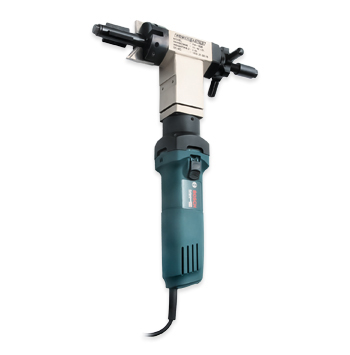
Range: 3/4" - 1.5/8" (20 - 42mm) ID.

Range: 1.1/8" - 3.0" (28 - 76mm) ID.

Range: 1.0" - 4.0" (23 - 104mm) ID.
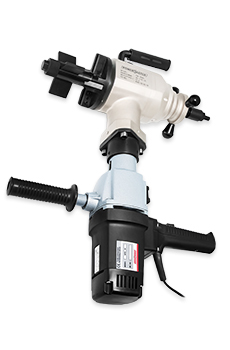
Range: 1.9/16" - 4.1/16" (39 - 104mm) ID.
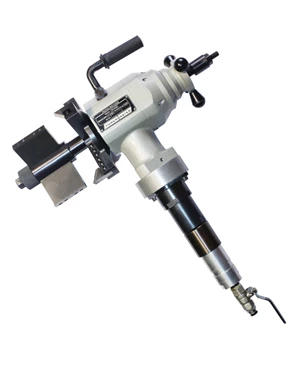
Range: 2.0 - 8.0" (49 - 203mm) ID.


